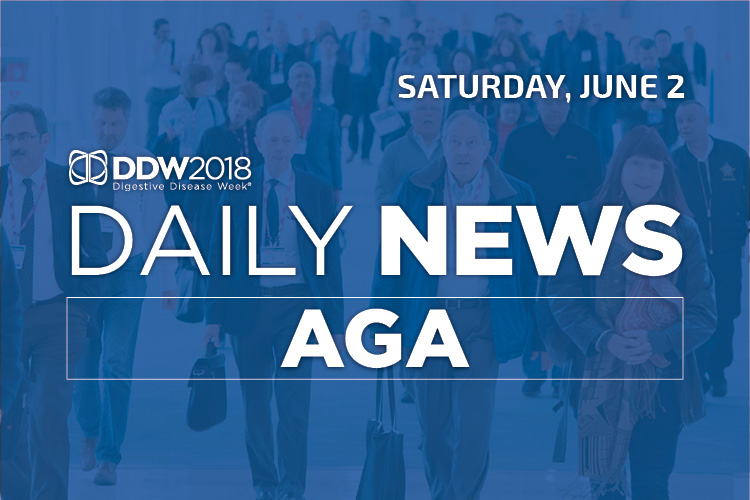
Sponsored by the AGA Institute Clinical Practice Updates Committee, Saturday’s Battle of the Heavyweights: Controversies in Clinical Practice From IBD to NASH session will tackle some of the most puzzling clinical aspects of inflammatory bowel disease (IBD), liver disease and pancreaticobiliary disease.
The 90-minute symposium will feature three debates among clinical research “heavyweights” moderated by Joseph K. Lim, MD, AGAF, associate professor and director of the Yale Viral Hepatitis Program at the Yale School of Medicine, New Haven, CT, and David A. Katzka, MD, professor of medicine and director of the Esophageal Interest Group at Mayo Clinic, Rochester, MN.
The first debate will examine the role of biosimilars in IBD treatment. Biologic agents have transformed the treatment of IBD and other GI diseases, and now biologic therapy might be transformed by biosimilars. The question, Dr. Lim said, is: Are biosimilars ready for prime time or should clinicians wait for more evidence?
To help clinicians decide, William Sandborn, MD, AGAF, professor of medicine at the University of California, San Diego, director of the Inflammatory Bowel Disease Center and chief of gastroenterology at UC San Diego Health, La Jolla, CA, will square off with Stephen Hanauer, MD, AGAF, professor of medicine at the Northwestern University Feinberg School of Medicine, Chicago, IL.
The second debate will focus on the identification of patients who are at risk of progressing to nonalcoholic fatty liver disease and nonalcoholic steatohepatitis (NASH). Up to 30 percent of the population has fatty liver, which is emerging as the no. 1 cause of cirrhosis requiring liver transplantation.
The current gold standard assessment for patients with fatty liver and abnormal liver enzymes is liver biopsy. However, Dr. Lim thinks liver biopsy is an imperfect standard.
“It’s an invasive procedure, associated with non-negligible risk, is limited by sampling error and interobserver variation in interpretation by pathologists, and is generally unpopular with patients,” he said. “And yet it remains a pivotal tool to establish the diagnosis of NASH and associated liver fibrosis, which influences medical management.”
What should the uncertain clinician do? Zobair Younossi MD, MPH, AGAF, chair of medicine and director of the Center for Liver Diseases at Inova Fairfax Hospital, VA, and Rohit Loomba, MD, MHSc, professor of medicine and director of hepatology at the University of California, San Diego, School of Medicine, La Jolla, will present the evidence and debate their conclusions.
The third debate will examine sphincter of Oddi dysfunction (SOD). Does it even exist? There’s no doubting the symptoms that lead to the diagnosis: recurrent abdominal pain typically following cholecystectomy. The rest is less certain.
One of the possible causes of pain in these patients is SOD, which is confirmed on manometry during endoscopic retrograde cholangiopancreatography (ERCP) and may resolve in some patients after treatment with endoscopic sphincterotomy to reduce sphincter tone. Recent changes in classification based on ROME IV criteria have distinguished sphincter of Oddi stenosis (formerly type 1 biliary SOD) from suspected biliary SOD (formerly type 2 biliary SOD) and functional pain (formerly type 3 biliary SOD), raising questions regarding the selective role of an invasive procedure such as ERCP with or without sphincterotomy.
Stuart Sherman, MD, professor of medicine and ERCP service chief at Indiana University School of Medicine, Indianapolis, and Grace H. Elta, MD, AGAF, FASGE, professor of medicine and clinical director of the Medical Procedures Unit at the University of Michigan Health System, Ann Arbor, will debate the question.
“This symposium is one of the most exciting at DDW® because it addresses some of the most vexing questions in clinical gastroenterology,” Dr. Lim said. “We have assembled a distinguished group of heavyweight experts to provide greater clarity as to how to apply best evidence to clinical decision-making for these challenging topics.”
Please refer to the DDW Mobile App or the Program section in Saturday’s issue for the time and location of this and other DDW events.



